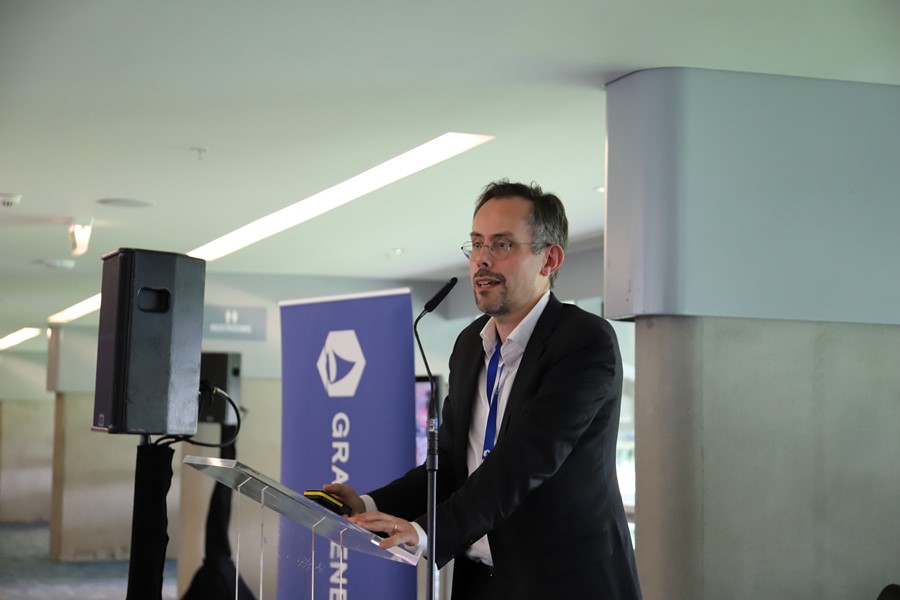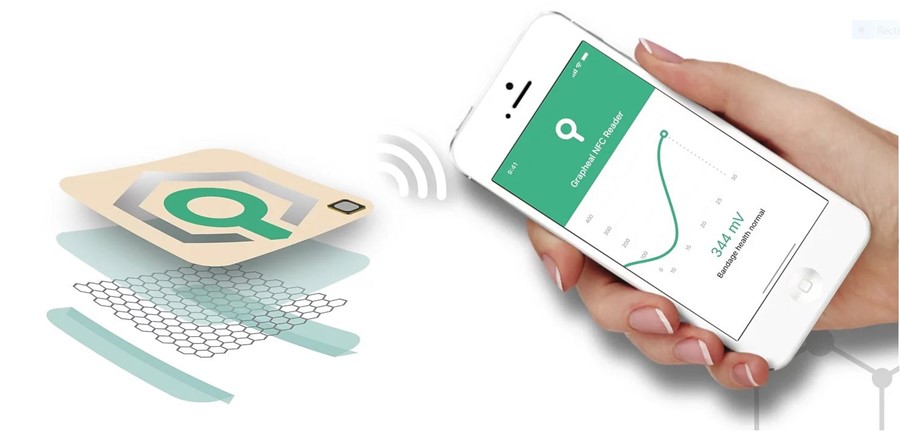Grapheal uses graphene sensors connected to smartphones for biomedical applications
Graphene-enabled sensors for wound monitoring, pathogen detection and more
Graphene Flagship Associated Member Grapheal [pronounced gra-feel] developed two products based on graphene-enabled biosensors with minimalistic electronics: WoundLAB is a smart plaster that takes the “journal of a wound”, while TestNTrace was devised for the rapid testing of COVID-19 and won the prestigious CES 2022 Innovation Award in Las Vegas.
We speak with Grapheal’s CEO Vincent Bouchiat, who showed us how these two devices work together with a smartphone.
How does your TestNTrace device work?
TestNTrace is a battery-free device with a graphene-enabled biosensor. It uses the power of a smartphone, which everybody has in their pocket, to power itself. Nevertheless, the diagnostic is made on a biosensing chip that contains antibodies that detect specific proteins (e.g. coronavirus proteins) in liquid (e.g. saliva).
Which advantages does it bring compared to a standard lateral flow test?
Currently, a lateral flow test takes 20 minutes. The data is not digital and there are confidentiality problems. TestNTrace shows the result in three minutes or less. It takes advantage of contactless communication technology, called NFC, that is already present in every smartphone. Furthermore, the collected data is GDPR compliant.
Which advantages does graphene bring?
Graphene is extremely sensitive to changes in charge and can be produced cost-effectively. Furthermore, it can detect the presence of an antigen in the solution in only two or three minutes. COVID-19 testing in the field needs connectivity, low cost and speed. This makes a huge difference if you want to test and trace people in high traffic areas such as airports, stadia, cruise ships or convention centres.
Can it detect other viruses or molecules beyond the coronavirus?
This device was developed to counteract the COVID-19 crisis, but it has the potential to be useful in a lot of other applications. For example, it could be used for drug detection. It can be convenient in many situations in the field, such as the screening of disease in cattle and water quality monitoring.
Now let’s talk about your WoundLAB. How did you get the idea to develop this device?
It's important to follow the wound evolution for long-to-heal wounds, such as the wounds of the elderly and diabetic people. If we can analyse the condition of the wound in a non-invasive way and without opening the bandage, we can monitor the wound evolution without having a direct invasive intervention or risk disrupting or introducing pathogens to the wound.
We have integrated a very flexible and biocompatible sensor inside bandages. It detects the wound’s pH and can directly connect to a nurse or other medical professional's smartphone.
Have you already tested WoundLAB in clinical trials?
We have completed the preclinical studies, and we have already shown that it is biocompatible and does not affect the wound. Now, we are trying the first clinical trials in a pilot study on diabetic patients.

Grapheal’s CEO Vincent Bouchiat

WoundLAB (Credit: Grapheal)




